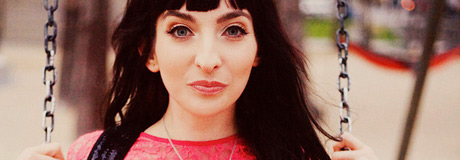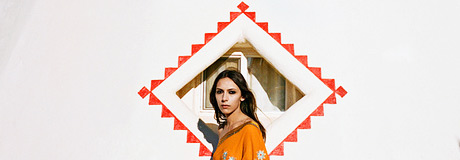Stuff-onomics: Hidden Side of What You Own
 Photo by
Cindy Loughridge
Photo by
Cindy Loughridge
Coming back from India, I feel like a different person. Not because of India, or that this is the cliché thing to say, but because I’ve been so out of touch with my old reality that I see my old life with a drastically different perspective. On top of being away for 3 months, I’m starting a new job and we are planning to move to another country later this year. Sitting here amongst all my things packed in 50 boxes retrieved from storage, it feels as if someone had pressed the “restart” button on my life.
It’s exciting, it’s scary, it’s surreal, and it’s so damn liberating. Gosh, it’s good to be home!
I’ve learned so many life lessons in the past few months, and I’ll start to share them with you over time. But the biggest lesson I’ve learned is how little we actually need. How little we need in order to be happy.
After traveling for several months in one bag: two pairs of pants, a few shirts, a jacket, several books, and my iPod (which I used once)…. Coming home to 50 boxes full of Stuff, it felt like my world was once again being weighed down by things I didn’t need. It felt as if the things will consume more of me than I will ever consume of it. Thus, my new project: to simplify my life… starting with Stuff.
Why We Collect Stuff?
“How little we actually need in order to be happy.”
This isn’t news. You knew that, and I did too. But why was it that I couldn’t part with those DVDs I will never watch again? Or, books I’ll never read? Or, clothing that I’ll never wear?
It is the stuff in our lives which we become attached to, because they give us a sense of self, a sense of identity. And by removing them, despite the clutter they cause in our inner space, it will feel as if someone is taking away our identity. It hurts the ego on a subconscious level.
Why do we collect stuff to begin with? For me, I collected stuff, because I wanted my life story to fit a certain persona and I collected stuff that would back up that story. For example, I wanted to be viewed as an artistic person, so I collected art books, photography collectables, and art works. They are displayed throughout my home, so that when I have visitors, they can see that I am indeed an artistic person and validate my story. Similarly, when I was heavily into technology, I wanted to be viewed as a highly technical person. I bought tech books and studied them so that I too could speak the lingo and fit in with my colleagues. These were my stories, but perhaps you can relate?
After playing the part of several personas, I have become the person I am today. What changed is that I reached the point where I was so full of stuff that I didn’t have room for any more. I have played the parts of an artist, an engineer, a fashion diva, a music collector, a dancer, a snowboarder, and an intellectual book worm. All these personas left me with more stuff than I need or even want. The physical stuff clutters my living space and the sense of peace I feel in my inner space. This state follows a quote I once heard: “Your outer world is a reflection of your inner world.”

The Sadus of India are pretty content with life, yet they own very little stuff. They carry all their possessions in light cotton bags. “… the biggest lesson I’ve learned is how little we actually need. How little we need in order to be happy.”
Why We Should Let Stuff Go?
Removing excess baggage will give us peace of mind, clarity and liberty.
We are not slaves to the stuff we own. We are the masters of our lives and the creators of our stories.
Learning to Let Go
If your house was on fire and you lost all your stuff, what would you miss most? If you had to move to a smaller apartment and needed to cut your stuff in half, what can you let go of? If you had to move across the country on a limited budget, what would you take with you? For everything else you’re leaving behind, perhaps they are not adding to your wellbeing anyway?
Moving is a great opportunity to practice letting go, since the process of packing forces you to realize how much you own. The more we can get rid of, the less we’ll need to carry around with us. Even when we don’t make drastic changes to our living location, it is still a therapeutic experience to periodically remove stuff we no longer need. Good questions to ask are: when was the last time I used this? Will I use it again? Will I use it often?
Make it an annual project to sweep through all that you own and see what you can remove. Just for fun, let’s call this the ‘Stuff Reduction Project’. Here’s what I did to give you some ideas.
First, select categories of stuff that will be included in your ‘Stuff Reduction Project’. For me, they were:
- Clothing – especially Shoes and Jackets
- DVDs
- Music CDs
- Books
- Kitchen Supplies
- Household Supplies – including cables, power extensions and blank CDs
- Bathroom Supplies
- Pet Supplies
- Magazines
- Office Equipment
Each category is given 3 hours max and treated like an assignment. Try to spread the assignments out and don’t try to do too much in one day.
Start tackling each assignment with several empty boxes, or leave enough room on the floor for several sorting categories:
- Yes – Stuff I’m keeping with no pending action.
- No – Stuff I’m not keeping, but I don’t want to throw away.
- Maybe – Stuff I’m not sure about. I want to keep it, but also can do without.
- Garbage
- Recycling
- Todo – Stuff I’m keeping that has a pending action or needs special attention. Examples: Papers to file, empty CD cases where the CDs needs to be recovered, ripped clothing that needs mending, shirts that needs to be hand washed, folders I need to further sort through in detail.
For each assignment, follow these steps:
- Sort As Fast As Possible – Go through everything within the assignment category and quickly make a decision of where it should go: Yes? No? Maybe? When was the last time you wore that shirt? If it was more than a year ago, consider giving it away. How many times have you watched that DVD? Will you ever watch it again? Consider letting it go. Was the item too expensive to just toss away? Sell it and get some money back. For anything you haven’t used in a year, consider putting it in the No or Maybe bin.
- If Yes – does it have pending action? If so, put it under Todo.
- Put Yes’s Away – Take all the items under the Yes category and further sort them if necessary. Put them away in orderly fashion. Make sure everything has a home, so you know where to put things back after using it in the future.
- Sort No’s – Will someone else want this? Can I sell it or donate it? Is it garbage? Can it be recycled? Break up the items you don’t want into additional categories if appropriate. In this way, you give each item an actionable next step. Some additional categories are:
- Sellable – I even go as far as breaking items in Sellable into where I’ll be listing them: Amazon.com, Ebay, local listings such as Craig’s list.
- Give Away to Friend – Put a yellow sticky or attach a note with the recipient’s name.
- Donate – If you plan to give different things to different charities or organization, do the sorting now. Example, while sorting, I separated new and business clothing for Dress For Success, and all other clothing goes to Salvation Army.
- Tending the Todo’s – If the Todo items can be quickly addressed, deal with them right away. Otherwise, put them in a box and handle them over time.
- Take Out the Trash – It is super rewarding to take out a large amount of garbage and recycling after filtering through your house. After sorting through all my paper works, I recycled two moving boxes full of paper & plastic, and two bags of garbage.
- Sell the Sellables – If you have time to list and sell items online, do it right away. It’s best to sell multiple things at once, instead of one at a time, so you can take advantage of batching and minimize trips to the post office. If things don’t sell in a given period of time, give them away in your donations box or to friends. (I have listed over 150 items and more than half have been sold. Here are some things I have remaining for sale.)
- Move Out the Donations – Bring your donation boxes to your charity of choice. This too is super rewarding. For me, after moving 10 boxes of unused clothing, books and household supplies out of my house, what felt like big weights lifted out of my shoulders. My closet is now organized and minimal, and I can finally breathe again.
Ideas for Keeping Your Stuff Under Control
I know how difficult it can be to part with your stuff, even if we’ve never used it or will ever use it again, we save it for that day, when it might become useful, except that day may never come. Often times, I’ve kept stuff I’ve never used, simply because I’ve spent good money on it and felt bad for tossing it. As a result, the stuff ends up owning me instead of me owning it.
The following are some ideas for keeping your unused possessions to a minimum.
- Re-Gift Box – I’ve told my friends and family not to buy me anymore stuff on birthdays and holidays, instead to give me something of theirs which I might be able to utilize or nothing at all. Consider setting aside a Re-Gift Box in a linen closet or dresser for things you no longer wish to keep and can make great gifts. Great choices include decorative objects of value with no apparent use, books you’ve really enjoyed but will not likely read again, home electronics still in great shape, picture frames which can be easily re-gifted with a meaningful picture. Re-gifting box is not the same as the Donation Box, only put useful or meaningful things that you’d feel comfortable giving away to friends. Re-gifting is not being cheap, it’s a practical and environmentally friendly way of re-cycling stuff by giving it a home where it can be utilized. For example, a friend of mine needs a DVD burner to back up his wedding photos, and I happen to have an extra one lying around in excellent shape. I plan to give it to him on his birthday in a month along with some blank DVDs.
- The Buying & Giving Rule – Try the ‘rule’ to allow yourself to buy something new only when you can remove something you already own. For example, only buy a new shirt if you’re willing to put an old shirt in your donation box. Similarly, only buy a new CD, if you’re willing to give away or sell another CD.
- Scheduled Sweep – Schedule periodic appointments with yourself to sweep through certain sections of your house.
- Ask Questions Before Buying – Most stuff accumulation are the result of impulse buys. I am are guilty of this and have found it helpful to ask some simple questions when I feel the urge to buy. Do I need it? How many similar items do I already own? How often do I use them?
- Waiting Period Before Buying – When you feel the urge to buy something unessential, try giving yourself a waiting period of a few days or weeks before buying it. Often times, you’ll find that you no longer need the item as you had initially felt.
- Box it. Date it. Toss it. – For stuff that you don’t want to throw away, yet have no immediate needs for. Put them in a box, close it and date the box that’s one or two years from today. Store the box in an attic or closet. Annually check on these boxes, when the date have passed, donate the box without looking to see what’s inside. If you don’t know what’s inside and haven’t used it in over a year, likely it’s not something you need anyways. And by not looking what’s inside, you won’t get attached to these things you don’t need in the first place.
Don’t expect to get rid of everything in one sweep, it’s a step process of letting go and it’s okay to keep a few things from your Maybe pile. I still have a hard time letting go of some things, but with each Stuff Reduction Project, I get better at detaching and end up removing more clutter. Expect to do several sweeps over the next few years. It takes patience, determination, courage and practice to eliminate the unnecessary clutter of unused stuff in your life. You’ll love the sense of freedom once you’re done.
Do you have tips for reducing the unnecessary stuff in your life? Talk to us in the comments. See you there!













n relation to this subject, everyone should read “Take Back Your Time” by John De Graaf with TimeDay.org
I would also like to suggest watching “Century of Self”
“Century of Self” looks at the history of public relations, marketing and advertising.
Understanding how your thought process can be influenced is important to avoiding buying stuff you don’t need.
You can find the video on Google, Amazon, and NetFlix. If you are alive, you need to watch “Century of Self”
Welcome back Tina, and thanks a lot for this great article. I’m moving to a new apartment next months and I will really try to follow your advise.
I am total packrat. I sure have learned lot from this article.
Welcome back Tina, it’s good to have you back. Your post is one subject that I’ve been trying to achieve in some way over the past year – not as well as I’d like, but am making progress. One motivating factor for me is the fact that I’m very tempted to take a few months out and do some travelling myself – I’d love to think I could survive out of just the one bag!
Welcome back, Tina! I read your blogs for a while but finally decided to write after seeing where you plan to move. Great choice, guys! We moved here years ago and this is the best home in the world! :-)
Happy to become acquainted w Tina in this, my 1st visit. My family has moved a few times and I have watched others do the same — especially elders. I have seen a whole household consumed by fire. I write family histories for a living. So I’m not being snarky to say what I haven’t seen among the presumably 20-ish commenters’ posts so far: Wait ‘Til You Have Children.
Then, you’re not only shepherding your own fragile sense of self along, expressed via Stuff, but little morphing cuties who grow into Marines and Rocket Scientists and Cops… Paradoxically, they’re too self-absorbed to collect their own records reliably, so guess who does. Think Mother’s Day…
And it’s a joy, actually. We parents become curators for our kids’ lives, And if your family has antiques or stuff handed down, it’s like a little Tara (GWTW) to drag the neat old stuff around as one’s “set,” each item freighted with stories and the taste of some cool predecessors who would actually be nice to meet.
This is not meant as a defense of clutter, but there are stories out there worth honoring. Now — one thing I’ve been able to do w my wife and w history clients is: digitize stuff that Has To Go. One poster mentioned this for documents — but why not just keep a backed-up photo of grampa’s golf clubs — not the whole moldy bag? And we recently snapped pix of hundreds of sheets of kiddy art and confidently chucked the lot. Ditto clunky jr-hi sculpture. We’ll have plenty of evidence for that fateful wedding rehearsal dinner in the future, when the slides roll and there will be the best/worst of the artistic excrescences.
If you want to keep you LifeLoad light, don’t marry a musician or a ceramics collector!
Thanks for the great reminder about the things that are truly important!
I think the crux of your problem comes down to the clutter you have is all based on you creating several fake personas for yourself.
Do what is real to you and you will never regret it.
Being a fake will not make you happy. Buying all the fake stuff that enforces your fakeness will never fulfill you. If everything you purchase is to re-enforce your fakeness, there’s no wonder you feel no attachment and want to get rid of it. Be yourself and everything you want will be based on you and not who you wish you were.
A better lesson is: BE REAL NOT FAKE.
The line that cements that: “For me, I collected stuff, because I wanted my life story to fit a certain persona and I collected stuff that would back up that story.”
Not only are you a FAKE, but you seem to aspire to a high level of FAKENESS.
Loved the post, but you’re preaching to the choir!
Those who adore simplicity will read and appreciate your words but “pack rats”, those who really need your help, won’t gain much. Unfortunately they require much more serious intervention. Believe me, as a quasi-Sadu I know the pain of attempting to persuade friends and family who hoard things to let go.
I think it is genetic. We’re built this way or that way. Not much we can do about it.
I’ve been wondering if you’ve disappeared altogether. So it sure is nice to know that you are still around on the blogosphere. Welcome back! Great article about living simply!!
Evelyn
Hey Tina,
Glad to see that you are back!
I’m looking forward to the reading more on the new transformations from your trip….keep on inspiring and good luck on the move (where to?)
All my love and support,
Ang
Glad to see your finally back! Nice post.
Excellent article, I was very suprised that you didn’t mention one of my new favorite web-sites http://www.freecycle.org/
Freecycle is a great concept, users post to local group with either “Wants” or “Offers”. If you’ve got something that still works, don’t dump it into a landfill, post an “Offer:” message on freecycle and someone who needs it will come get it. Also, don’t add to your clutter, if your niece absolutely has to have a “Barbie” cake for her birthday, post a “Wanted: Barbie cake pan” message and someone who has one will give it to you, when your done pass it on to someone else. A fantastic concept, and very neighborly.
We would like to hear about your experience on this trip to India..
As you already stated one experience here what other things you liked/disliked in this trip?
Glad to see you after three months with this great article.
Wonderful article. Thanks for the great reminder.
Hi Tina!
Welcome back. I too, like the concept of clutter free lifestyle, especially since most parts of our lives are complicated by nature. In fact not long ago, like what you did, I emptied nearly a quarter of my wardrobe and three-quarter of my music CDs.
I found that as time goes by, most of the things I used to like didn’t appeal to me as much as before.
At the same time, I want to add a point to one of your ‘ideas to keep your stuff under control’, specifically the point: “Ask Questions Before Buying”.
I was taught to ask myself 2 questions before I dish out my credit card or cash at the cash counter, which I found to be very useful. Let me share with everyone here.
1. When you see something that you really like, ask yourself, “How will buying this thing help me achieve my dreams? Will it change my life for the better?” Then…
2. Ask yourself the next question, “Considering that I invest this money at a 4 percent interest rate, how much can I get back after 10 years? After 20 years? Do I really want to spend this money?”
It’s pretty funny if you come to think about it. Most people procrastinate most of the time. But the moment it comes to shopping, they suddenly lose the temptation to procrastinate. And soon, they find their house shrinking in space when the stuff they buy piles up.
Again, welcome back.
Last year I imposed what I called a “careless spending tax” on myself. If I was inclined to make any purchase other than consumable household items I had to first either donate to a charity or lend money on Kiva.org.
Overall I decreased my spending for the year and many times after choosing a charity or Kiva loan I did not make the purchase at all.
Hi Tina,
Welcome back. You have no idea how much I miss your sharing and articles.
The termites in my house have taught me a great lessons about this. I have tons of things that I keep but no longer need them. (Like you said, they represent my identity)
I find it extremely difficult to let them go until I found that the termites has eaten most of them.
I have no choice but to destroy and throw all of them.
I can belief how much “lighter” I felt after the clutters are cleared.
Now, I’m looking forward to throw more. Section by section.
Thanks to the termites and your article too. :)
> … the biggest lesson I’ve learned is how little we actually need. How little we need in order to be happy
I find this particularly interesting because last night a colleague of mine who had recently visited India said the same thing.